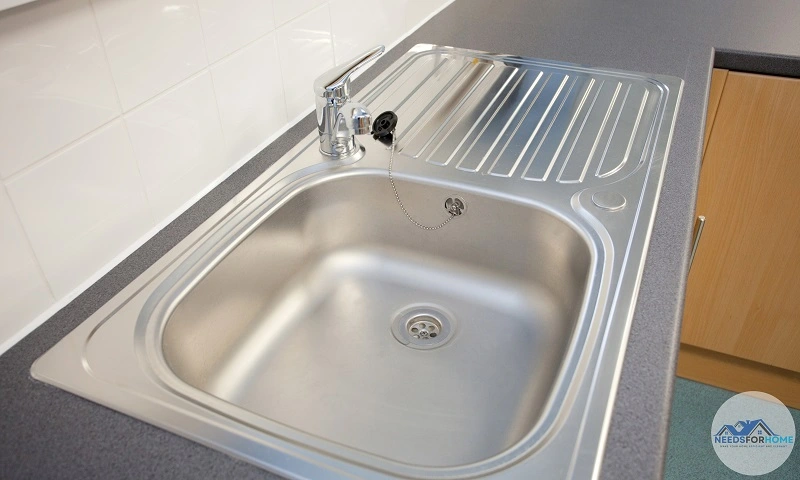Does Kitchen Sink Need Air Vent? (Best Advice)
Plumbing involves working with both fluids, air, and water. Proper airflow is necessary to ensure a continuous water flow in the pipelines.
Imagine a single pipe connecting two water tanks and the tanks are placed at different altitudes so that water can flow with the help of gravity. Now close the top of the tank. Will the water flow through the pipe? NO!
In this article, we shall discuss the importance of air vents for kitchen sinks and other sinks in the house.

Does Kitchen Sink Need Air Vent?
Kitchen sinks and every other sink in your house require an air vent to aid the continuous flow of waste water down the drain line. Without a proper vent, the water cannot flow through the pipes and the negative pressure (vacuum) created in the drain pipe causes sewer gases to flow toward the kitchen sink.
Plumbers usually take care of air vents carefully so that water can flow seamlessly and the gases are vented outside of the home. In the case of sinks, either it will have a small vent to allow air into the drain line for water flow. It is attached adjacent to the P-trap before the curved part to allow air. Or it is connected to a larger air vent pipe.
There are two methods by which the air is vented for the kitchen sinks:
- Traditional Air Vent
- Air Admittance Valve
Traditional Air Vent
This involves the use of a main vent pipe with which all the drain lines from sinks, tubs, etc. are connected to. This pipe extends to the top of the house and it will provide air down the drain line for the water to flow continuously.
Traditional Air Vents are a great method in many aspects. It can provide better airflow to the drain lines and ensures better water flow. The gases can exhaust outside the home safely and they will not produce any odd smells inside.
Also, this method requires a lot of pipes and all of them must be concealed properly to avoid ruining the décor of the house. Also, when there is a crack or failure in the pipes, it might be difficult to repair them.
But many states only prefer this type of venting and as per your state regulations, construct your house and design the plumbing.
Kitchen sinks can also be provided with an air vent in this method which avoids gurgling of the sink and avoids sewer gases to rise to the sink.
Air Admittance Valve
This is an easy method compared to traditional air vents. It involves the attachment of a small air admittance valve that is fitted beside the P-Trap pipe before the curved part.
This valve is sufficient enough to provide the required airflow into the drain line and keep the wastewater flowing into the drain line.
The major advantages of this method are that they are very inexpensive and don’t require a lot of piping through the house.
But this method is not entirely beneficial, especially for the kitchen sink. Because, in this method, there is a chance for the failure of the valve and this causes a vacuum to form in the drain line which attracts sewer gases into the sink.
Due to this potential hazard, several states don’t allow the use of air admittance valves and advise using the traditional venting method. Since sewer gases contain methane, it is better to avoid this method.
How Air Vents Help Kitchen Sink Drainage?
When you provide proper air vent to your kitchen sink drain properly, you will have the following benefits:
- Your sink will not clog and the waste water flows seamlessly into the drain line
- The P-Trap will not be siphoned out and the water in the bent part will remain intact
- The sewer gases will not rise to the sink
- Excess gases will be properly exhausted out of the house
- Avoids the gurgling of the kitchen sink
Due to these potential benefits, it is necessary to provide proper air vent to the kitchen sink with the help of traditional air vents or in some cases using the air admittance valve.
How Far Should You Place The Air Vent From The Sink?
The maximum distance in which the vent must be placed depends on the diameter of the pipe. Generally, it should be as close as possible.
The kitchen sink drain pipe has a diameter of 1 ½ inches and the maximum distance at which the vent can be placed is 42 inches. That means you should not place the vent more than 42 inches (3.5 feet) away from the drain line to promote continuous airflow.
When designing your piping system for the kitchen, make sure to follow this code which provides you the regulations to setup air vents so that you can avoid gurgling and clogging in the sink drain.
Read our other Posts:
Conclusion
The only way to promote continuous water flow in your sinks is to use air vents. Without these vents your kitchen sink cannot drain the waster water down the drain line properly. Also, it prevents the water from siphoning out of the P-trap which protects the sewer gases from rising toward the sink.